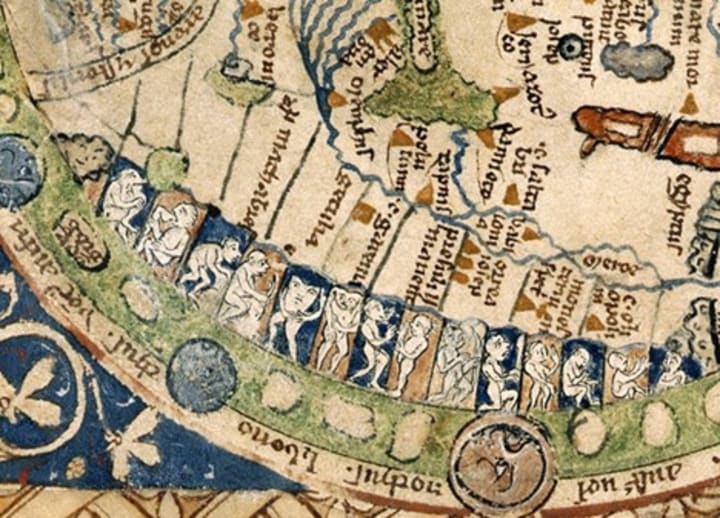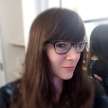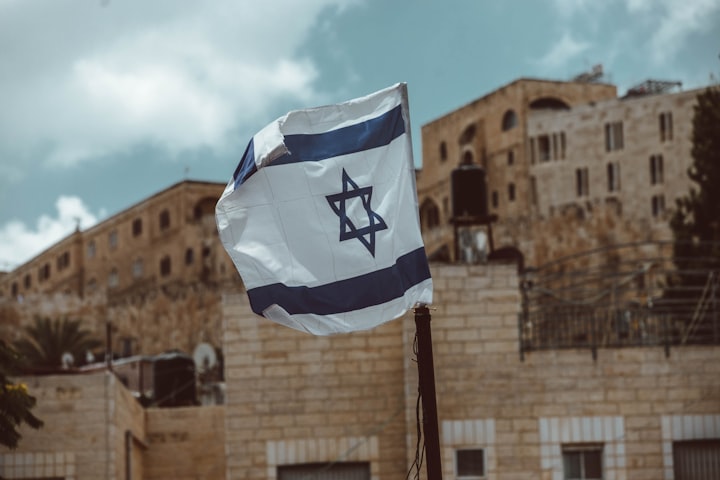Monsters on the Edge
Examining & Analyzing the Edges of Medieval Maps

During the Medieval Ages people often used images to illustrate the contrast between good vs. evil, especially in religious contexts. Some of these images include a collection of creatures of mythological origins that are coined the “monstrous races”, a term that has recently been considered problematic. These monsters are often seen on the edges or borders of maps and Romanesque churches. They are used as a symbol for the unknown edge of the world which can include existing cultures and people, and act as a counterpoint for the center of the known Christian world. When viewing the creatures in this context it is important to consider whether race is a proper term to use when talking about the monsters or whether a different phrase should be utilized.
It is important to understand what creatures were often utilized on the edges. In the Wonders of the East, a detailed collection of these monsters often found in margins was created. It is in these illuminated pages you can see further details of the different creatures, including the Blemmye (Fig. 1). The Blemmye is a collection of creatures that have no heads and instead have faces on their chests. In this case, his nakedness is full-frontal and his genitals, complete with pubic hair, are exposed. He stands on the lower edge of the artistic frame and his hands are gripping the sides.”

The figure’s lack of shame in covering himself is in direct contrast with many illuminations of Adam and Eve. This differentiates the figure from being completely human. The monster is aware and unashamed of his nakedness, instead choosing to put itself on display. “Nakedness, and especially the depiction of exposed genitals, is never incidental in Anglo-Saxon manuscript art. For example, in Oxford, Bodleian Library, Junius 11, three fallen angels are drawn naked with visible genitalia, signifying their debased, sinful condition.” For the Blemmyes and other monsters on the edges to be drawn naked shows that these creatures do not fall into religious ideals and are a direct foil to maps and architecture that were Christian based. “The dominance of Christianity in the production of texts provides yet another motivation for the development and persistence of an Anglo-Saxon literature [and art] of the monstrous and exotic.” This further reinforces the notion that the images of the monsters within texts often acted as a counter-balance to the religious interior. Maps created during this time often used religious landmarks form the bible and were used more for religious purposes than directions.
The Psalter Map (Fig. 2) is an illustration within a Book of Psalms. Although it is a relatively small image the map is detailed and intricately drawn, with Jerusalem occupying the center of the map. Along the right side of the map is a strip of the “monstrous races”. Within the 14 panels are creatures that are eating human feet, Blemmyes, creatures with one foot that they used to shade themselves (Sciapods), and dog headed men (Cynocephali) (Fig. 3). They are often known collectively as the Plinian races. The Psalter Map “is among the earliest to display the monstrous races in Africa, although these creatures had appeared earlier still in medieval art and architecture.” Although this is one of their earliest uses, it sets the tone for what these creatures are meant to depict.
By using these creatures to depict Africa, it reinforces the idea or stereotype that not only is that part of the world unknown to Medieval Europe, but that the people or animals that occupy that area are monsters. The choice to use fantastical beasts acts as a foil for the religious imagery of biblical events which “seems to revolve around a central point in the map: the city of Jerusalem.

Fig. 2 Psalter Map, The British Library, London
Jerusalem’s placement on the world disk in the Noachid maps is a visual reflection of the belief that it was geographically the center of the world.” The difference between the holy city, the biblical events and the monsters is further reinforced by the specific placement of the beasts on only the right side of the map, rather than around the entire edge of unknown area. Instead they are on the right-side underneath Christ’s left hand as he sits on the top of the world. This placement on the left is a reference to those who are evil or condemned, in this case several different types of monsters.

The Psalter map is not the only map to employ the use of “monstrous races” on the borders. The Hereford Mappa Mundi (Fig. 4) made in the 13th century features 32 different images of the strange creatures and beasts. Most of the creatures are placed near Africa, India, and other unexplored Non-Christian territory, however this does not mean all the “monstrous races” were meant to strictly represent the Eastern countries. The location in ‘the East’ was not in itself essential to the geography of the monstrous; rather, the monstrous was defined by its location on the periphery, beyond the pale, at the edge of the world.” If it was unestablished predominantly Christian territory it could be considered part of the unknown edges. There is also a reference to the polarizing imagery of the right and left hand of god where the saved are on the right and the condemned visually on the left.

Architecture, especially Romanesque churches, also used creatures carved in stone to border the walls or the “edge” of the church. Often stone images of hybrid or fantastical creatures were situated around the top and borders of the interior and exterior of churches or Cathedrals, which would be a sharp contrast to the interior or holy area where people would worship. While there are many examples of churches and cathedrals with stone carvings of monsters and gargoyles, a reaction to one example of the monsters was written about by Saint Bernard.
The Moissac Abbey, built around 1100, uses monstrous images around the column capitals within the cloister. One such image includes a man crouched under two lions (Fig. 5). Saint Bernard wrote about his reaction to the use of monsters and beasts within religious buildings. “What profit is there in those ridiculous monsters, in that marvelous and deformed beauty…to what purpose are those unclean apes, those fierce lions, those monstrous centaurs, those half-men those striped tigers, those fighting knights, those hunters winding their horns?” The images were not considered to be outright demonic, but were used as a decorative foil for the Christian space. Even though he disagreed with the imagery in a place of worship, it still left an impression upon Saint Bernard, as fantastical beasts and creatures.

For years artisans have employed the use of these fantastical creatures for a symbol for unknown areas, their origins as far back as the Greek and Roman times. Although the concept of monsters as a visual representation of the unexplored world has been around for a long time, the term “monstrous races” is a concept and word choice created by later generations. The earliest use of the “Plinian race” isn’t until the 1800’s. The fact that the term used to name these creatures that show up on the edges complicates our understanding of what they are meant to represent. This outside opinion can be seen in other art terms as well, “Renaissance humanists…first used [Gothic] as derogatory term to describe what they saw as the ‘barbaric’ architecture.” By bringing in an outside term it brings a different layer of context to the image itself.
Part of the problem with the use of these monsters to represent the unknown is both their place in the fantastical realm and the use of the word “race” to describe the group as a whole. Especially when that word represents fictional creatures that are used to represent real civilizations. The word “race” is the major divisions of humans who share distinctive physical characteristics, culture, history, and language. Mittman, a scholar on medieval works that utilize theses creatures, states that “the appellation of ‘monstrous races,’ after all, suggests the intersection of two sets of ideas, monstrosity and race—which, besides apportioning the world’s monsters into discrete races, also invites contemplation of race as monstrosity.” Not only are these monsters compared with civilizations and cultures that were unfamiliar to Medieval Europe, but parallel connections can be drawn between the connection of races, especially different races, to monster.
So what term would be use for these collections of monsters if the term race is removed. That “we might try to avoid the trouble by replacing the term ‘race’ with ‘ethnicity,’ a term that seems more acceptable to some scholars who have rejected ‘race’ as problematic.” However it still gives the monsters an essence of humanity, and creates a divide between the people or idea that the monsters represent, and what they actually are. Perhaps calling the monsters by their specific names: Blemmyes, Sciapods, Cynocephali, and others, or referring to them as simply monstrous creatures would be sufficient.
The term “monstrous races” becomes problematic when considerations are made that these creatures were used to represent real people and cultures, and considerations should be made on whether another term would be advantageous. The representation of these creatures within maps and Romanesque churches is to act as a foil to the center of the known and safe Christian world. While many of these monsters, especially within maps, are directly referencing “the East” they are often stand ins on the border of the unknown world, something that would cause both interest and concern for people during the Medieval Age.
References:
Camille, Michael. Gothic Art: Glorious Visions. Upper Saddle River, NJ: New York, 2003.
Friedman, John Block. The Monstrous Races in Medieval Art and Thought. Cambridge, Mass: Harvard University Press, 1981.
Mittman, Asa Simon. "Are the 'Monstrous Races' Races?" Postmedieval 6, no. 1 (2015): 36-51.
Mittman, Asa Simon and Susan M. Kim. "Monsters and the Exotic in Early Medieval England." Literature Compass 6, no. 2 (2009): 332-348.
Monk, Christopher. “A Context for the Sexualization of Monsters in The Wonders of the East.” Anglo-Saxon England 41 (2012): 79–99.
Münkler, Marina. “Experiencing Strangeness: Monstrous Peoples on the Edge of the Earth as Depicted on Medieval Mappae Mundi.” The Medieval History Journal 5, no. 2 (2002) 195-222.
Schapiro, Meyer. “On the Aesthetic Attitude in Romanesque Art.” Romanesque Art. Vol. 1. New York: G. Braziller, 1977.
Whitfield, Peter. The Image of the World: 20 Centuries of World Maps. London: The British Library, 2010.
About the Creator
Scarlett Callohan
Hi, I'm Scarlett!
When I'm not busy writing I'm drinking a large amount of coffee while reading or working on new recipes.
Thank you for all your support!
If you'd like kindle copies of some of my fiction pieces visit Amazon and search for me!






Comments
There are no comments for this story
Be the first to respond and start the conversation.